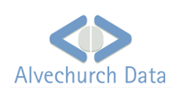Conversion Strategy
Despite the high level of compatibility between the various versions of
FoxPro and Visual FoxPro, converting from one to another is never going to
be a purely automatic process. The closest that you can get to this is the
route of
Functional Conversion
but, although this will be a very quick process requiring minimal effort,
you will deliver a product which looks like a ten-year-old application
from Windows 3 and which has none of the modern facilities which users
have come to expect.
The work of converting the program logic and the data structure is
minimal. All the hard work comes with the conversion of the user
interface. This work falls into three categories:
- Object orientation
- New controls
- New style
Object orientation
The conversion to object orientation is due to the change in the
programming model from version 2 to Visual. Visual FoxPro includes two
converters which will do the bulk of that work. These converters are not
perfect but, if it were not for the other two factors below, then we
could live with their shortcomings.
New controls
New controls have been introduced to the Windows user interface since
FoxPro 2. We now have grids and pageframes in FoxPro, we have access to a
wide range of ActiveX controls, and we have the ability to provide
seamless links with office software such as Word and Excel. Users
appreciate the ease of use that these new features have brought and
they would not like to see them missing from their "new"
database.
Style
FoxPro 2.6 ran under DOS, Windows, Macintosh and Unix. The style of the
user interface has changed a great deal since then and the converted
database would look very out of place on a Windows XP computer if it still
used the colours, fonts and styles of Windows 3. A modern application
makes much greater use of graphical elements whereas a converted FoxPro 2
database will use text everywhere.
Why stick with FoxPro?
Given that the best way of converting the database is to rewrite it then
the question of which language to use must be considered. There are two
major advantages to sticking with Foxpro: language and data structure:
Language
The user interface is only part of a database application. The business
logic behind that interface exists as procedures and functions in FoxPro 2
and these procedures and functions can be transferred unchanged into
Visual FoxPro. If a completely new application were to be designed and
built in Visual FoxPro then these algorithms would be implemented as
methods of classes. Even then though, the methods have to be written using
the FoxPro procedural language and much of the code from the FoxPro 2
routines will be transferred unchanged.
Data structure
Visual FoxPro supports all the data types used in earlier versions of
FoxPro for DOS and Windows. The only unsupported type from earlier
versions is the Macintosh Picture type but, as VFP no longer runs on
Macintosh, that is understandable. If the database were to be
rewritten in another language then there would be issues with the minor
incompatibilities and inconsistencies in data types. Names of tables and
fields may also have to be changed so you will need some sort of master
cross-reference document.
Visual FoxPro can share data files with earlier versions of FoxPro. If a
new database were to be used then all the old data would have to be
converted and all users would have to change simultaneously and completely
from the old to the new system. There would be no possibility of easing
the transition with a period of parallel running and no possibility of
reverting to the older system in an emergency. The data compatibility
between FoxPro and Visual FoxPro allows you to take an incremental
approach to the changeover.
You can start the changeover by converting just one module of the
application to Visual FoxPro. If you build that module as a self-contained
executable then you have two ways of integrating it with the old
application. One is to remove that option from the old menu and
give the users a new shortcut to the new module on their desktop. The
other is to modify the old menu so that the appropriate option actually
calls your new module rather than using the original code.
The possibility of parallel running, of an incremental changeover, and of
having the fallback position of reverting to the old application makes an
upgrade from FoxPro to Visual FoxPro very much easier, cheaper and less
risky than a conversion to another language.
Introduction
|
Data
|
Program code
|
Menus
|
Reports
|
Screens
|
Strategy
|

